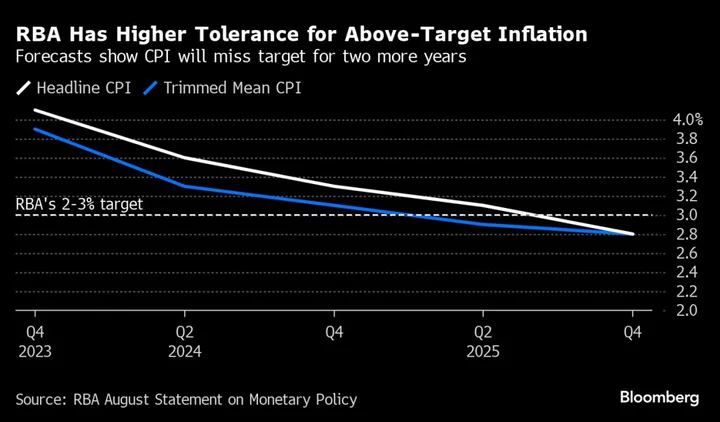Australia’s inflation rate came in faster than expected in the three months through September, bolstering the case for the Reserve Bank to raise interest rates next month after four meetings of standing pat.
The consumer price index advanced 5.4% in the third quarter from a year earlier, more than economists’ estimate of 5.3%, Australian Bureau of Statistics data showed Wednesday. The result shows consumer prices remain well above the RBA’s 2-3% target.
The reading will worry new Governor Michele Bullock, who has reiterated the central bank is in data-dependent mode after 12 rate increases since May 2022. Expectations the figure will prompt a hike at the RBA’s Nov. 7 policy meeting saw the currency extend gains and the three-year government bond yield jump 10 basis points to 4.25%.
Bullock has talked tough on inflation, warning a series of economic and geopolitical shocks mean policymakers are struggling to look through price spikes from global events. Those remarks led traders and economists to put a greater emphasis on Wednesday’s report before deciding which way the RBA would swing at its November meeting.
Money market bets imply a more than 70% chance of a rate hike next month from about 40% before the release. Economists are divided with many saying rates have peaked already and the next move is down, not up.
Wednesday’s report comes after US producer prices rose more than forecast and core inflation excluding shelter and energy services — a measure closely watched by Federal Reserve Chair Jerome Powell — also picked up.
Even so, Fed officials look set to hold rates steady for the second time in a row next week, though they’re far from calling an end to their tightening campaign.
The RBA, which has moved at a more cautious pace than the Fed, having raised rates by 4 percentage points compared with 5.25 by the US, has highlighted services inflation as a particular area of worry.
--With assistance from Tomoko Sato.

